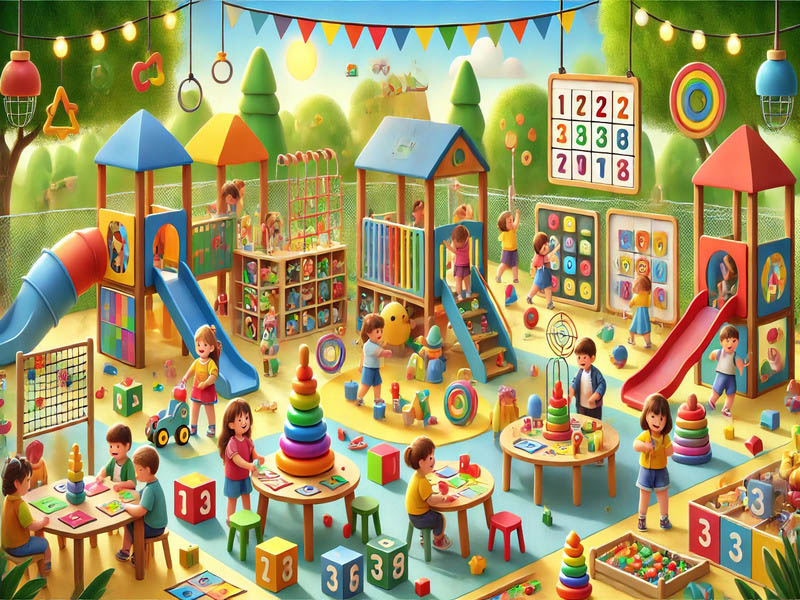PlaySourceHome Cooperative tag game ideas are helping teachers, coaches, and parents turn classic chasing games into fun, fair, and inclusive activities for every player.
Why Cooperative Tag Game Ideas Matter
Traditional tag can be thrilling, but it often leaves the same children out. Fast runners dominate, while slower or more anxious kids get eliminated early. Cooperative tag game ideas change that pattern. They focus on shared goals, flexible rules, and ways for every child to contribute.
Instead of rewarding only speed, these variations reward teamwork, creativity, and awareness. Players still enjoy chasing and dodging. However, they also learn to communicate, adjust strategies, and support one another.
For teachers, this approach supports social-emotional learning. For parents and coaches, it offers structured play that feels spontaneous and joyful. As a result, cooperative tag game ideas work well in schools, camps, birthday parties, and family gatherings.
Core Principles of Inclusive Cooperative Tag
Before choosing specific games, it helps to understand what makes a tagging activity inclusive. These core principles guide most cooperative tag game ideas and keep the chase fun for mixed-ability groups.
1. Everyone Stays in the Game
Elimination is the biggest barrier to inclusion. Once children are “out,” they lose movement, engagement, and confidence. Inclusive formats avoid permanent elimination. Instead, they offer transformation, roles, or quick ways to rejoin.
For example, players might become helpers, switch sides, or freeze until teammates rescue them. This structure keeps every child active and reduces boredom and embarrassment.
2. Multiple Ways to Succeed
Speed should not be the only path to success. Cooperative tag game ideas use different skills: communication, observation, planning, or even humor. That way, quieter or less athletic children can still feel valuable.
A child might excel at spotting patterns, organizing strategy, or encouraging teammates. When those strengths matter, more players feel confident and engaged.
3. Clear Rules and Safe Boundaries
Inclusive games rely on clarity. Children need to know where they can run, how to tag safely, and what happens when they are tagged. Simple rules prevent conflict and frustration.
Meanwhile, safe tagging should be emphasized. Use light touches on the shoulder or back, never pushing or grabbing. Mark clear boundaries with cones, chalk, or natural landmarks and explain them briefly before starting.
Simple Cooperative Tag Variations to Try
The following cooperative tag game ideas use minimal equipment and can be adapted for different spaces. You can adjust time limits, team sizes, or roles based on age and energy level.
Blob Tag
Blob Tag begins with one tagger, called the “blob.” When the blob tags someone, that person joins hands with the blob. The blob grows longer and more awkward, but also more powerful.
Players must cooperate within the blob, communicate, and move together without hurting anyone. This makes the game less about individual speed and more about coordination.
To keep things inclusive, set a time limit rather than playing until everyone is tagged. After the round, rotate who starts as the blob so different children experience leading and following.
Hospital Tag
In Hospital Tag, players who are tagged are not out. Instead, they “injure” the body part where they were tagged. For example, a tagged arm must be held behind the back.
If they are tagged again on a different body part, that area also becomes “injured.” After three injuries, the player goes to the “hospital” zone for a quick recovery exercise, such as jumping jacks or deep breaths, then returns to play.
This variation spreads out pressure and keeps everyone moving. It also teaches body awareness and emotional regulation, because players use the hospital break to reset.
Everybody’s It Tag
Everybody’s It Tag is exactly what it sounds like: every player is both a tagger and a runner. When someone is tagged, they perform a quick action, such as five star jumps, then continue playing.
Because there is no elimination and no winner, the game feels chaotic but playful. Players learn to manage space, avoid collisions, and accept being tagged without shame.
Meanwhile, adults can frame the activity around effort instead of victory. You can challenge the group to keep moving for a set time while staying safe and kind.
Read More: Best active playground games to keep children moving safely
Designing Cooperative Tag Game Ideas for Mixed Abilities
When you work with children of different ages, strengths, and needs, it is important to design cooperative tag game ideas with flexibility. Small adjustments make a big difference for inclusion.
Adjust Tagging Rules
One simple idea is to give slower runners a “superpower.” For example, they might freeze taggers for three seconds when they are tagged, forcing taggers to pause and count aloud.
Another method is to allow walking tag for some players and running tag for others. Clarify that both roles are important to the success of the game.
Use Safe Zones and Power-Ups
Safe zones offer short rest breaks without fully removing players. Mark two or three small circles where children can stand for five seconds to catch their breath.
You can also scatter “power-up” cards or cones that grant temporary abilities, such as immunity, double speed, or the right to rescue frozen teammates. These tools create strategy and excitement beyond pure speed.
Include Non-Running Roles
Some children may have mobility challenges or simply dislike constant running. Cooperative tag game ideas can include supportive roles such as timekeeper, score tracker, or rule reminder.
Non-running players can also manage power-up stations or act as referees who give positive feedback. They still contribute to the group goal and stay socially involved.
Making Tag Games Feel Fair and Fun
Fairness in tag is about perception as much as rules. Children notice when the same people always start as tagger or when teams feel uneven. Thoughtful routines help maintain trust.
Rotate Starting Roles
Rotate who begins as the tagger or team captain. You can draw names from a hat or go around the group in order. This reduces arguments and perceived favoritism.
Also, check in with children who are shy or anxious. Offer them the option to join as a regular runner first, then take on leadership roles later.
Set Time-Limited Rounds
Short rounds, such as two to five minutes, make it easier to reset unbalanced games. If one team is overwhelmed, you can adjust teams or rules at the break.
Short rounds also keep energy levels manageable. Children get a built-in water break and a chance to reflect on what worked well.
Practical Tips for Teachers and Parents
Implementing cooperative tag game ideas does not require special training, but a few habits increase success. Clear expectations and positive language are crucial.
Start by reviewing safety: gentle tags, eyes open, and no pushing. Demonstrate the correct tag and let children practice in pairs. This quick step prevents many conflicts.
Next, explain the goal in simple terms. For example, say that the group is trying to keep everyone moving, or to rescue all teammates before the timer runs out. Emphasize that working together matters more than winning.
After that, run one short practice round. Pause to ask children what felt fun or tricky. Then, adjust rules slightly based on their feedback. These refinements build ownership and buy-in.
Long-Term Benefits of Cooperative Tag Play
Over time, cooperative tag game ideas support more than physical fitness. Children develop resilience because they handle frequent tagging without feeling like failures.
They learn social skills as they negotiate rules, invite others in, and resolve small conflicts. They also practice empathy, noticing when someone is tired, scared, or left out.
For adults, these games provide a quick way to build community. A group that can chase, laugh, and cooperate together usually transitions better to classroom work or team discussions.
Ultimately, cooperative tag game ideas help transform a simple playground chase into a rich, shared experience. When adults commit to inclusive rules and flexible variations, tag becomes a tool for connection rather than exclusion.
By returning often to cooperative tag game ideas, you keep the chase fun, fair, and welcoming for every child, from the fastest sprinter to the quiet observer.



